Key Points and Summary – The F-16 Fighting Falcon—“Viper” to its crews—started as a nimble, low-cost day fighter and became the backbone of Western airpower.
-The U.S. military wanted an agile dogfighter to complement heavier jets; allies wanted an affordable multirole platform with room to grow.

F-16A on USS Intrepid NSJ Image. Taken by Jack Buckby on 9/18/2025.
-Fly-by-wire controls, a big bubble canopy, and a powerful single engine made it a pilot’s airplane; its wiring, pylons, and radar made it a weapons Swiss Army knife.
-From the Bekaa Valley to Desert Storm to the Balkans and beyond, F-16s have flown more combat than any modern fighter. With new radars, weapons, and structural life extensions, thousands will serve well into the 2040s and 2050s.
-Over the years, National Security Journal has made its way around the country to visit various F-16 fighter exhibits. In this article, you will find many original photos from those visits.
The F-16 Fighting Falcon Is a Legend for a Reason
When the F-16 was conceived in the early 1970s, the U.S. Air Force faced a simple problem wrapped in Cold War anxiety: the service needed numbers of fighters that could out-turn and out-think Soviet designs, not just out-spend them.
Heavy, long-range jets like the F-15 would win the air-superiority duel; what the force lacked was an affordable, nimble partner that could fill airfields, deter by presence, and still be lethal in a knife fight.

F-16 Logo on F-16A in NYC. Image Credit: National Security Journal.
Allies saw the same need from a different angle. European nations wanted a common fighter that wouldn’t bankrupt defense budgets, could take off from shorter runways, and could haul bombs on Tuesday after flying air defense on Monday. For countries with long coastlines and short warning times—think the Netherlands, Norway, Denmark, Belgium, later Greece and Turkey, then further afield to Israel, South Korea, Singapore, the UAE, and many more—the F-16 promised reach and flexibility at a price and maintenance footprint they could sustain.
In short: the United States wanted an agile complement; allies wanted a dependable multirole tool. The F-16 grew into both.
How A Lightweight Idea Became A Multirole Icon
The jet evolved from the “Lightweight Fighter” competition, where the design philosophy was radical for the time: keep it small, keep it simple, and let the pilot fly the airplane. The winning concept featured a powerful single engine, with a pilot sitting high under a seamless bubble canopy.
The controls were fly-by-wire—electronic signals, not steel cables—paired with relaxed static stability, allowing the jet to maneuver aggressively without overwhelming the pilot. A side-stick controller let pilots fly with wrist pressure, freeing eyes and body for the fight.

F-16 Fighting Falcon Onboard USS Intrepid. Image Taken on September 18, 2025.
Then came the twist that made the F-16 more than a day fighter: engineers left space and power for larger radars, additional pylons, and more advanced weapons as technology matured.
By the late 1980s and 1990s, the “lightweight” fighter was equipped with precision bombs, anti-radiation missiles for hunting enemy radars, and long-range air-to-air missiles—without compromising its core agility.
That blend—athlete’s body, technician’s brain—explains why the F-16 became everyone’s fighter. Nations could tailor avionics, radios, and weapons to their doctrines while buying into a common training and sustainment ecosystem.
What The Engineering Means In The Cockpit
It’s easy to drown in acronyms. Here’s the F-16’s design in plain terms:
Fly-By-Wire + Relaxed Stability: The airframe is naturally “twitchy,” which would be unsafe without computers. Those computers transform into cat-like, allowing pilots to point the nose and perform high-G turns precisely.
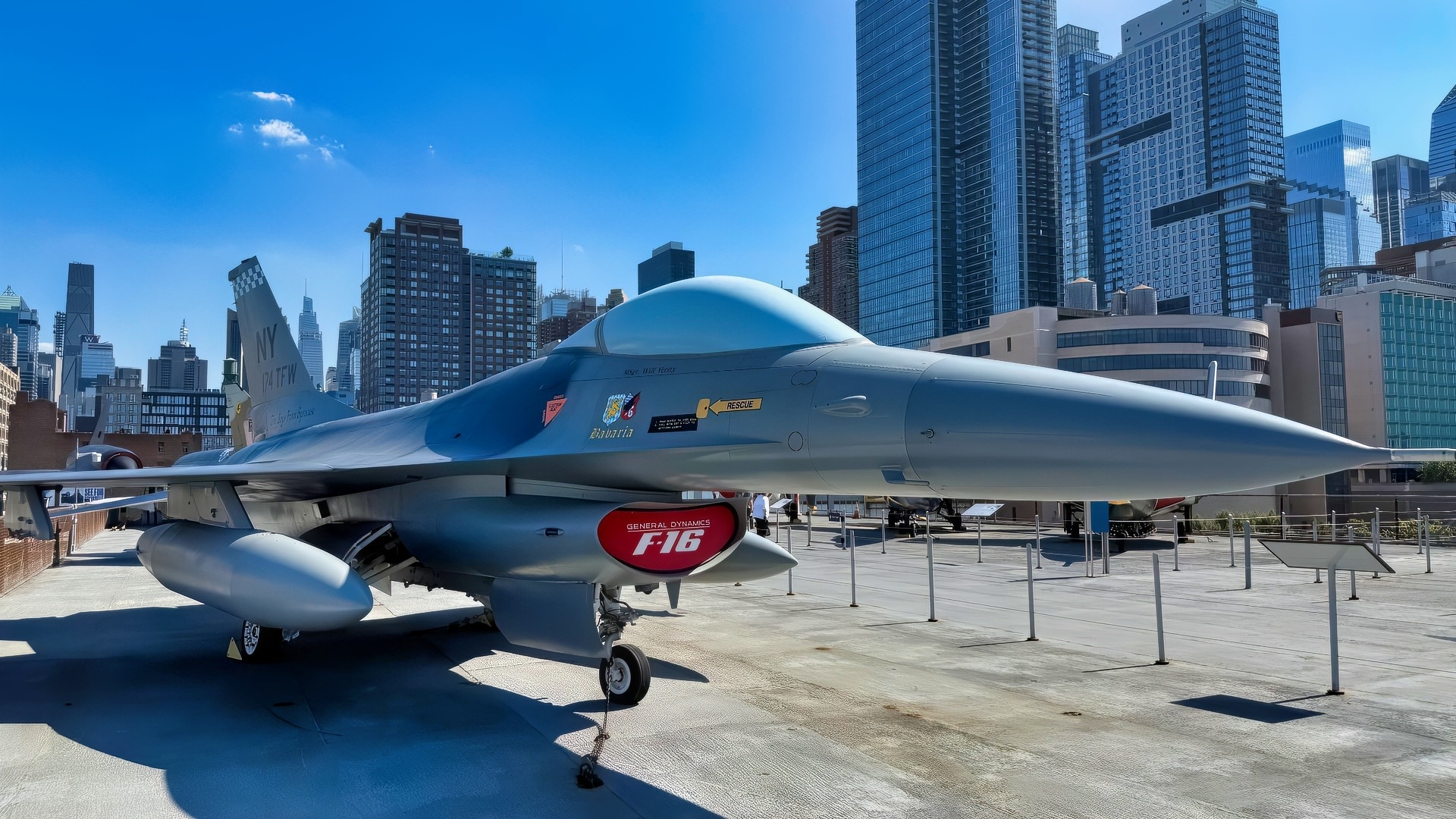
F-16 Fighting Falcon National Security Journal Photo. Taken on 9/18/2025 Onboard USS Intrepid.
Bubble Canopy + Elevated Seat: Visibility is astonishing. In a dogfight—or down low avoiding threats—seeing first is living first.
One Big Engine (F100 or F110 families): A single, powerful turbofan keeps logistics simpler and gives the thrust to carry real weapons a long way at useful speeds.
Growth Room: From early mechanically scanned radars to today’s AESA (active electronically scanned array) sets, from iron bombs to GPS-guided kits and stand-off missiles, the jet’s “wiring closet” could absorb upgrades without endless redesigns.
Specs vary by block and engine, but think Mach 2-class top speed, 50,000-plus feet ceiling, combat radius of several hundred miles (stretchable with tanks and tankers), and a 9-G envelope. More important than raw numbers: the F-16 stays controllable and communicative at the edges, which is what pilots crave.
Early Combat: The Viper Proves Itself
The F-16’s first real trial by fire came in the Middle East. In the early 1980s, Israeli F-16s paired speed and precision to knock down enemy aircraft and strike hardened ground targets, including well-defended sites. Those fights validated the jet’s energy maneuverability concept: keep speed in hand, convert it to position, and make the other pilot react to you. The airplane’s sturdiness—taking battle damage, bringing pilots home—built a reputation that spread faster than press releases.

A Polish F-16 pilot awaits instructions from his crew chief after completion of a Baltic Air Policing sortie at Šiauliai Air Base, Lithuania, Aug. 30, 2017. The Polish air force recently relinquished control of the NATO Baltic Air Policing mission to the U.S. Air Force for the forty-fifth rotation of allied protection of the sovereign skies of the Baltic region since Baltic Air Policing operations began in 2004. (U.S. Air Force photo/ Tech. Sgt. Matthew Plew)
Elsewhere, early operators used the jet for air policing and quick-reaction intercepts. Crews discovered the Viper’s personality: it rewards smooth hands, punishes ham-fistedness, and, with practice, becomes an extension of the pilot’s thinking.
Desert Storm: Mass, Precision, And Staying Power
If one campaign cemented the F-16’s global status, it was Desert Storm in 1991. The Viper flew thousands of sorties—more than any other coalition fighter—hitting airfields, command and control nodes, aircraft shelters, and later, battlefield targets. Early on, many loads were “dumb” bombs with careful planning and laser designation support; as the war matured, precision munitions made smaller formations more lethal. F-16s also flew combat air patrols, keeping Iraqi fighters grounded or on the run.
The lesson wasn’t that the F-16 was glamorous. It was that it showed up—day after day, night after night—took gas from tankers, followed tasking, and delivered. Air forces crave that kind of reliability.
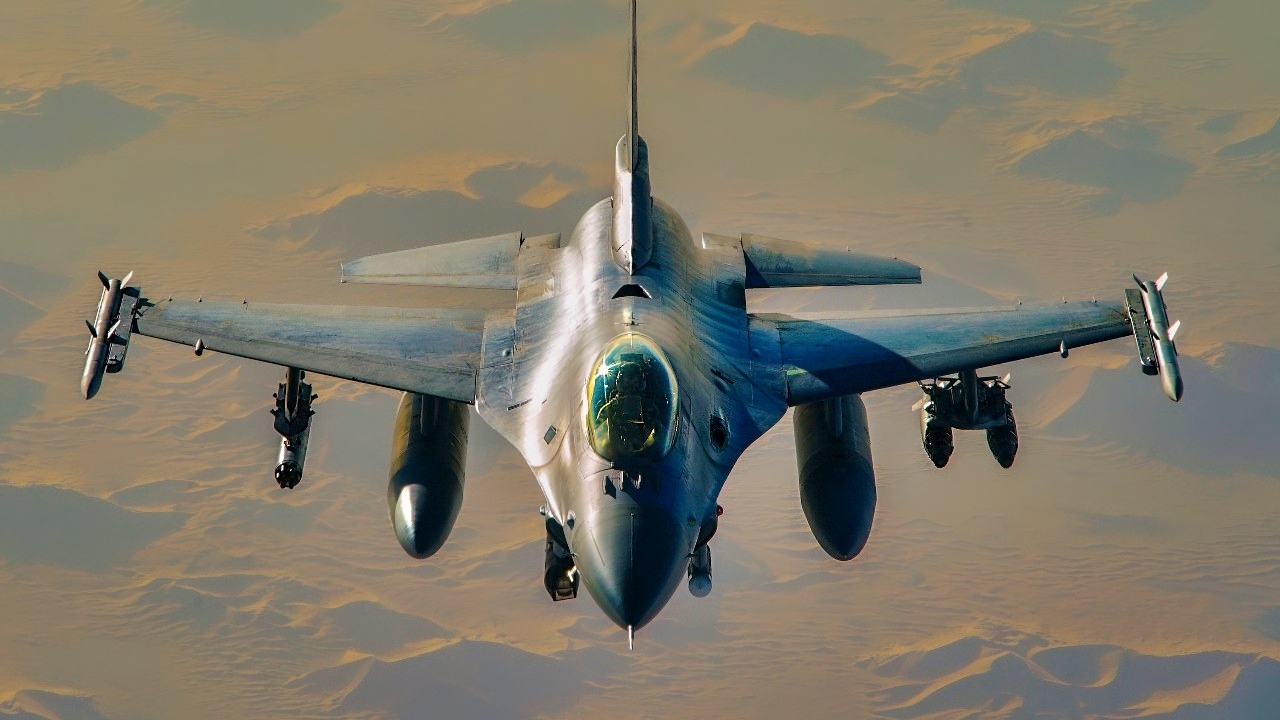
A U.S. Air Force F-16 Fighting Falcon based in the Central Command area of operations conducts armed aerial patrols in Somalia in support of Operation Octave Quartz, Jan. 9, 2020. The F-16s support to OOQ demonstrates the U.S. military’s reach and power projection across vast distances to hold adversaries such as al-Shabaab at risk with flexible, precise and lethal force that is capable of rapidly responding anywhere on the globe. The mission of OOQ is to reposition U.S. Department of Defense personnel from Somalia to other locations in East Africa. (U.S. Air Force photo by Staff Sgt. Taylor Harrison)
The Balkans: From No-Fly Zones To Kosovo
Across the 1990s, F-16s policed no-fly zones over Iraq and later over Bosnia, then took leading roles in Operation Allied Force over Kosovo in 1999. Two missions stand out.
First, air superiority: Vipers downed enemy aircraft with modern beyond-visual-range missiles, guided by airborne warning planes and their own improved radars. Second, SEAD—suppression of enemy air defenses. Specialized F-16CJ/CM variants (often called “Wild Weasels”) carried radar-hunting missiles and electronic warfare pods, baiting hostile radars to emit, then blinding or destroying them. That cat-and-mouse, equal parts nerve and math, became an F-16 specialty.
21st-Century Wars: The Quiet Heavy Lift
After 2001, F-16s settled into the long, grinding work of modern war: close air support for troops, strikes on fleeting targets, and armed overwatch where the goal is deterrence as much as destruction. In Iraq, Afghanistan, and later against ISIS in Syria, the Viper’s mix of endurance, precision weapons (from small GPS-guided bombs to laser weapons), and secure radios made it a natural “quarterback” overhead.
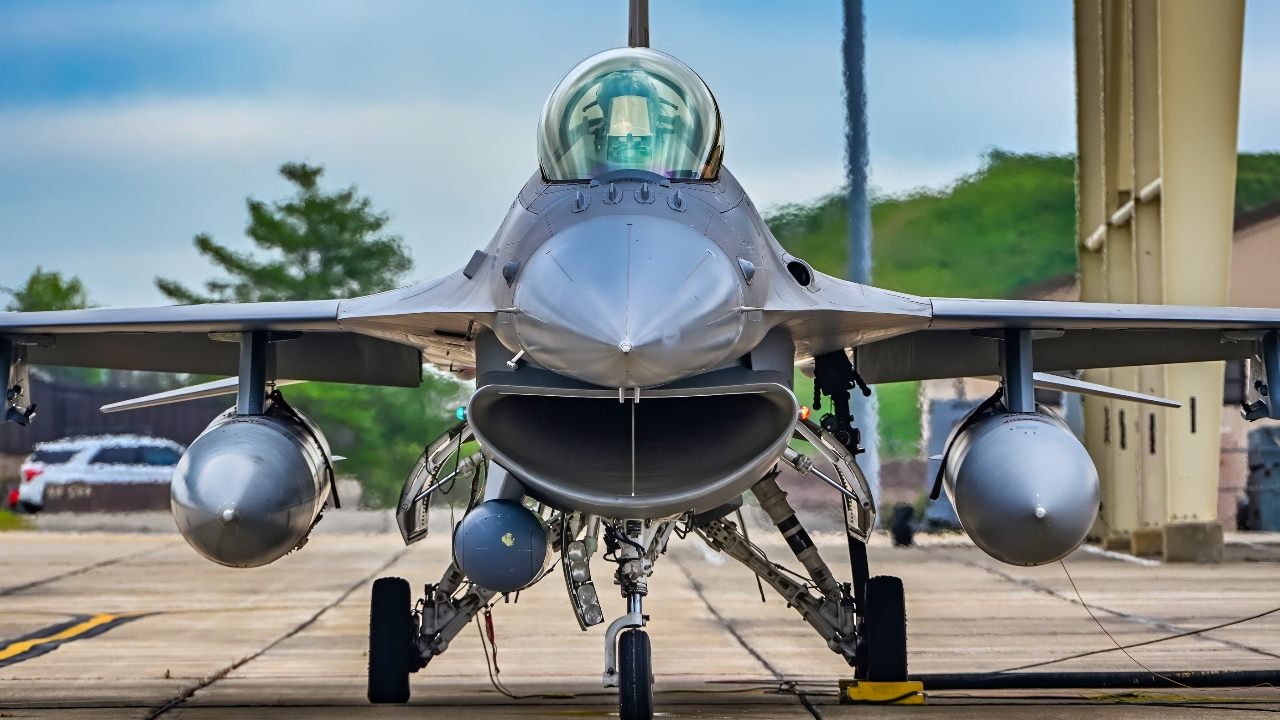
Secretary of the Army, Hon. Dan Driscoll, flies in an F-16 assigned to the 121st Fighter Squadron, 113th Wing, District of Columbia Air National Guard in a familiarity flight at Joint Base Andrews, MD, May 29, 2025. As the Secretary of the Army, Hon. Driscoll has been delegated the responsibility of command of the District of Columbia National Guard by the President of the United States. (U.S. Army photo by Sgt. David Resnick)
Allied fleets mirrored the pattern. Dutch, Danish, Norwegian, Belgian, and other European Vipers struck in the Balkans and later over Libya; Middle Eastern operators used their jets for border defense and anti-terror operations; Asian fleets patrolled contested airspace and practiced maritime strike. The jet that began as a day fighter became the default for everything short of the most specialized stealth missions.
How Many, How Long, How Different?
One reason you see F-16s everywhere: there are thousands of them. Over the decades, more than 4,600 have been produced across many blocks and export flavors. That scale created a virtuous circle: training pipelines stayed full; spare parts stayed available; upgrade kits could be developed once and fielded many times.
Another reason: variety without chaos. A Greek F-16 and a Singaporean F-16 might carry different radios or electronic warfare suites, but they share a core airframe, engine families, and many weapons. That keeps multinational operations sane and lets allies learn from each other’s upgrades.
Upgrades That Keep The Viper Young
What keeps a 1970s design lethal in 2025? Constant, meaningful refreshes:
AESA Radars (e.g., APG-83): These “digital eyes” see farther, track more targets, resist jamming better, and open up new air-to-ground modes for all-weather precision.
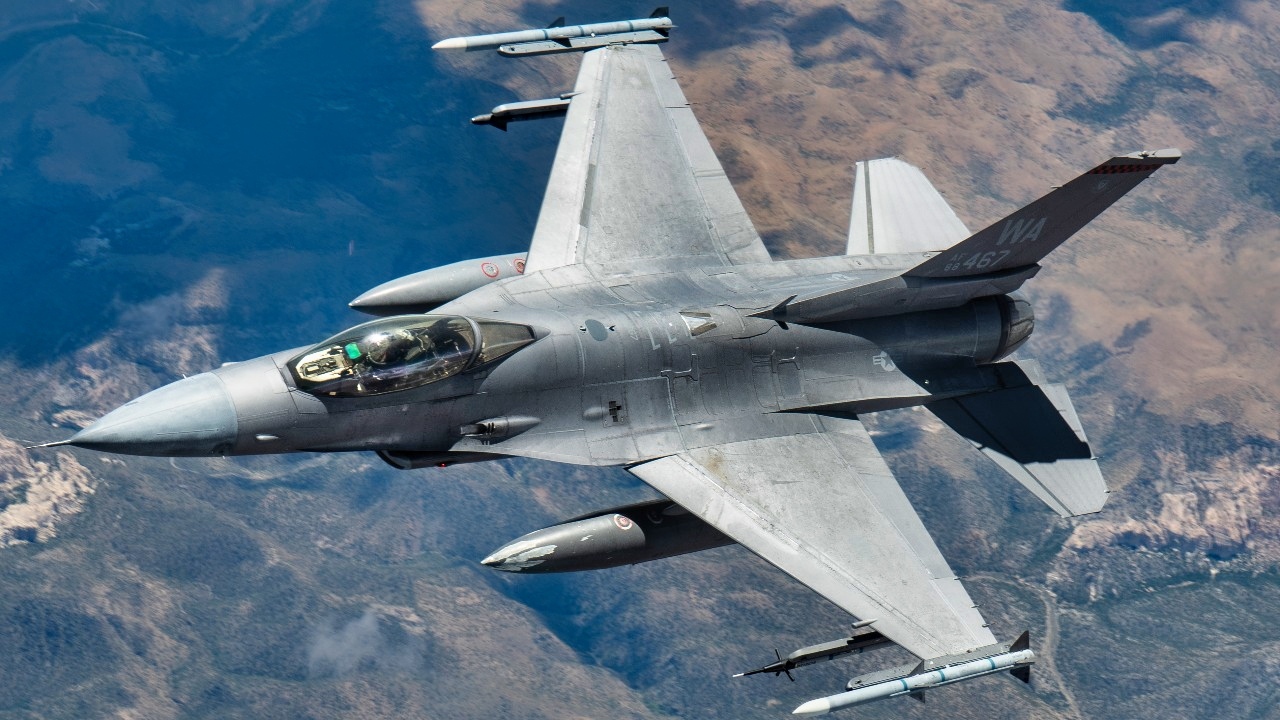
A U.S. Air Force F-16 Fighting Falcon assigned to the 16th Weapons Squadron flies over the Nevada Test and Training Range during a Weapons School Integration (WSINT) mission, June 9, 2025. WSINT is a graduate-level training event that combines multi-domain assets in large-force scenarios, enabling U.S. Air Force and joint service members to hone tactical expertise and integrate advanced capabilities in a dynamic threat environment. (U.S. Air Force photo by Staff Sgt. Jose Miguel T. Tamondong)
Helmet-Mounted Sights: Pilots can look at a target and cue high-off-boresight missiles or designate a point on the ground—speeding engagements and shrinking mistakes.
Digital Backbones And Data Links: Modern mission computers, Link 16 networking, and secure waveforms let F-16s share a live picture with other jets, ships, and ground units.
Weapons Menus That Matter: From AMRAAM in the air to JDAM/SDB for precision strikes, to HARM/AARGM for radar hunting, to JASSM-class standoff missiles in some fleets, the jet can tailor its punches to the problem.
Structural Life Extensions: Center-fuselage replacements, new wings, and system overhauls significantly extend airframe life, pushing it well past original estimates, transforming “retire in the 2000s” into “fly into the 2040s and 2050s.”
New-build Block 70/72 (often branded “F-16V”) jets rolling out today add all of the above from the factory, along with cockpit makeovers that reduce workload and improve reliability. For air forces priced out of stealth or waiting in long queues, a brand-new Viper is a sensible bridge with bite.
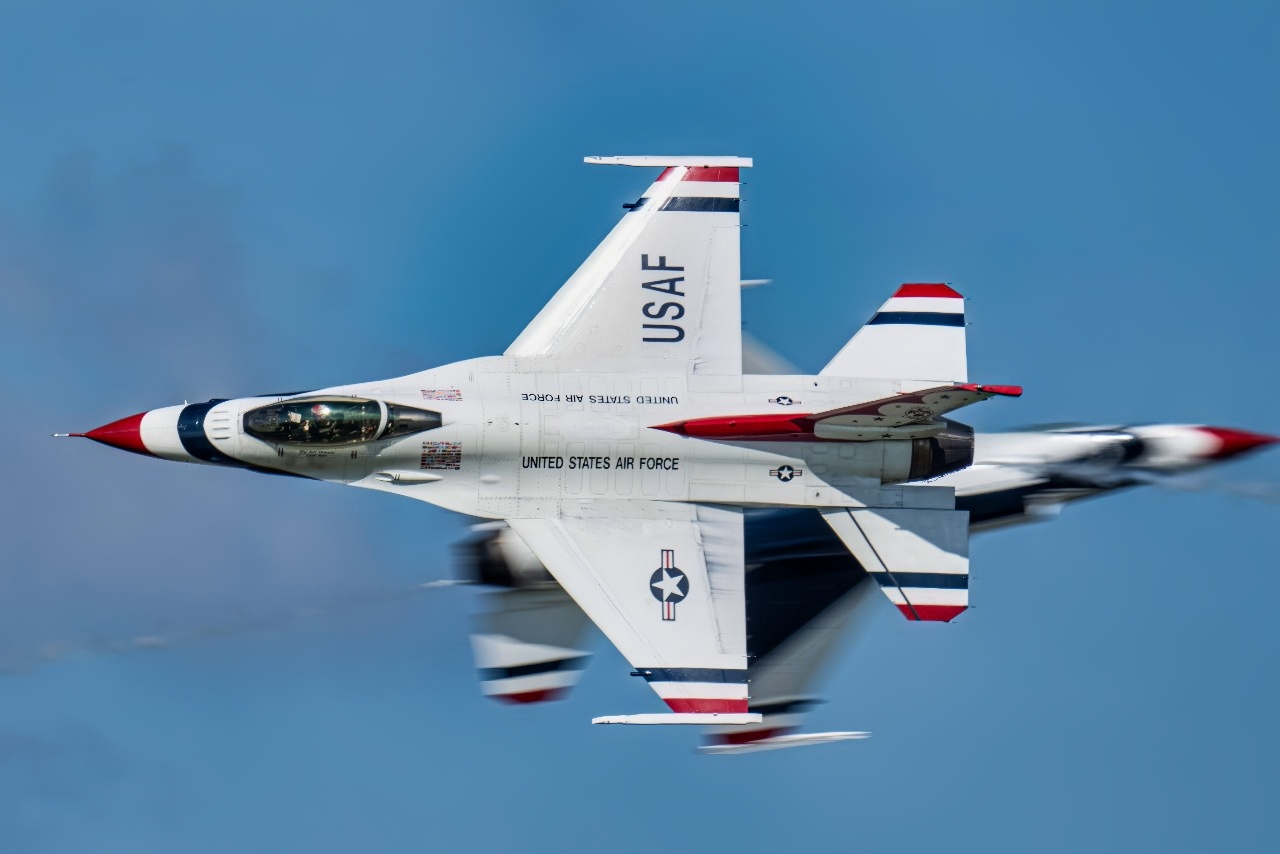
The United States Air Force Air Demonstration Squadron “Thunderbirds” perform at the Defenders of Liberty Airshow at Barksdale Air Force Base, Louisiana, March 29-30, 2025. The Thunderbirds perform at air shows across the country to showcase the capabilities of the United States Air Force, its Airmen, and the F-16 Fighting Falcon. During World War II, Barksdale served as a major bomber training base, and it has since become the home of the 2nd Bomb Wing, the oldest bomb wing in the Air Force. (U.S. Air Force photo by Tech. Sgt. Keith James)
Combat History of the F-16
Dogfights and deterrence. The F-16’s air-to-air record includes classic merges and long-range missile shots, often decided by who built the better picture faster. Crews praise the airplane for talking to them—through feel and instruments—when the fight gets ragged.
Precision in crowded places. In urban strikes, F-16s earned trust by putting the right weapon on the right building and waving off when the picture wasn’t clean. That combination of capability and restraint is what political leaders expect now.
SEAD/Wild Weasel. If there is a “personality” mission, this is it: roll into a web of hostile radars, coax them to light up, then delete them—or force them to shut down so others can pass. It’s not glamorous, but everyone else sleeps better when the Weasels fly first.

F-16 Fighting Falcons assigned to the 114th Fighter Wing sit ready on the ramp while conducting an elephant walk at Joe Foss Field, South Dakota, July 2, 2025. The 114th Fighter Wing conducted an elephant walk to demonstrate its ability to project fighter airpower. (U.S. Air National Guard photo by Master Sgt. Luke Olson)
Maritime strike and defense. Coastal nations use F-16s to watch sea lanes, escort patrol aircraft, and train for anti-ship missions. The jet’s speed and sensors make it a sharp tool against fast, ambiguous threats at sea.
Why It Kept Beating The Odds
Other fighters are stealthier, carry more, or fly farther. So why does the F-16 keep winning competitions and extensions?
Cost To Capability: You can buy meaningful capacity—jets, pilots, parts—without sinking the entire defense budget. A smaller air force can afford to train enough, not just buy hardware.
Pilot Pipeline: The jet is demanding but forgiving; it produces confident aviators who then transition smoothly to other types, including stealth fighters. For many nations, an F-16 schoolhouse is a national asset.
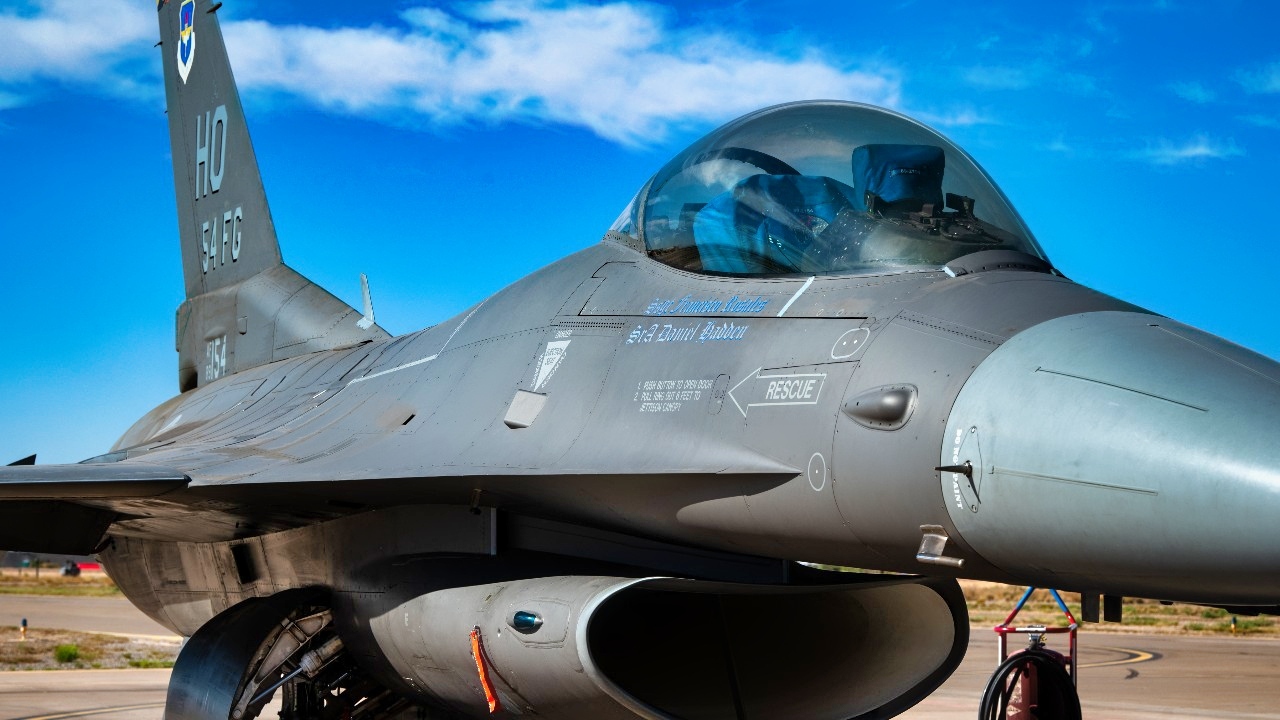
An F-16 Fighting Falcon assigned to the 54th Fighter Group sits on the flightline at Holloman Air Force Base, May 1, 2025. The F-16 was the first production aircraft with a fly-by-wire flight control system, meaning it’s controlled electronically instead of with direct mechanical linkages, allowing for more precise and safer maneuvers. (U.S. Air Force photo by Staff Sgt. Gaspar A. Cortez)
Interoperability: On a coalition day, the F-16 is the least surprising jet in the briefing. Everyone knows how it talks, how it takes gas, and what it can and can’t do.
A Global Sustainment Village: With so many operators, no one is truly on their own. Lessons and fixes diffuse quickly. If a part is scarce, someone somewhere has a line on it.
The Viper In The Age Of Stealth
Stealth jets grab headlines, and rightly so. But even in a world with F-35s and other low-observable platforms, the F-16 has clear jobs:
Day-Two And Day-Three Mass: Once stealthier aircraft have kicked doors and blinded radars, Vipers surge with precision weapons to keep pressure on.
Homeland and Border Defense: Quick-reaction alert, identification, and escort are classic F-16 tasks—constant work that preserves hours on more exquisite fleets.
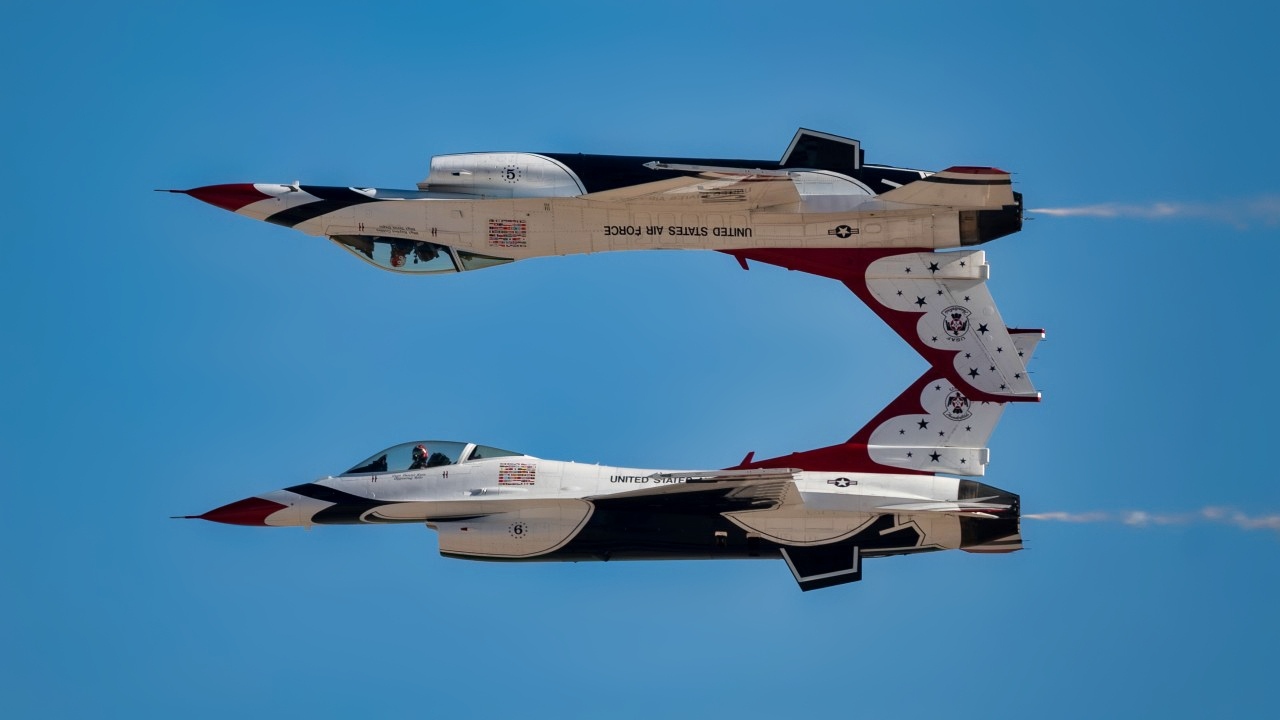
Two F-16 Fighting Falcon fighter jets assigned to the U.S. Air Force Air Demonstration Squadron “Thunderbirds” perform an aerial demonstration during the Aviation Nation 2022 airshow at Nellis Air Force Base, Nevada, Nov. 4, 2022. The Thunderbirds perform maneuvers that test and showcase what is required from every combat aviator. (U.S. Air Force photo by Airman 1st Class Josey Blades)
Partner Capacity: For allies who can’t field stealth soon, F-16s with modern sensors and weapons provide credible deterrence now, not in ten years.
Test and Training: The jet’s ubiquity makes it a perfect baseline for tactics development and multinational exercises.
How Long Will the F-16 Fighting Falcon Serve?
With ongoing structural refreshes, modern radars, and current weapons, many fleets plan to fly their F-16s into the 2040s and beyond. New-build Block 70/72 jets extend that horizon further for countries taking deliveries today. The timeline doesn’t just depend on airframes; it depends on munitions stockpiles, tanker availability, and training budgets. Where those stay healthy, the Viper remains a first-team player.
And when future conflicts require swarms of uncrewed teammates, an upgraded F-16 is a fine quarterback: cheap enough to risk, smart enough to lead, and connected enough to matter.
Bottom Line
The F-16’s story isn’t about one trick or a single perfect design choice. It’s about balance—agility without fragility, simplicity where it counts, growth where it matters, and a price that lets nations buy not just jets, but the training and maintenance that turn jets into airpower.
That’s why the Viper has been everywhere for forty-plus years, why it has written such a thick combat memoir, and why runways around the world will keep hearing that unmistakable single-engine roar for decades to come.
About the Author: Harry J. Kazianis
Harry J. Kazianis (@Grecianformula) is Editor-In-Chief and President of National Security Journal. He was the former Senior Director of National Security Affairs at the Center for the National Interest (CFTNI), a foreign policy think tank founded by Richard Nixon based in Washington, DC. Harry has over a decade of experience in think tanks and national security publishing. His ideas have been published in the NY Times, The Washington Post, The Wall Street Journal, CNN, and many other outlets worldwide. He has held positions at CSIS, the Heritage Foundation, the University of Nottingham, and several other institutions related to national security research and studies. He is the former Executive Editor of the National Interest and the Diplomat. He holds a Master’s degree focusing on international affairs from Harvard University.
More Military
The F-22 Raptor Stealth Fighter Still Haunts the U.S. Air Force
The U.S. Navy’s Big Nuclear Attack Submarine Mistake Still Stings
China’s J-20 Mighty Dragon vs. F-22 Raptor Stealth Fighter Summed Up in 4 Words
Why Is a U.S. Navy Aircraft Carrier Still Damaged 8 Months After a Collision?










